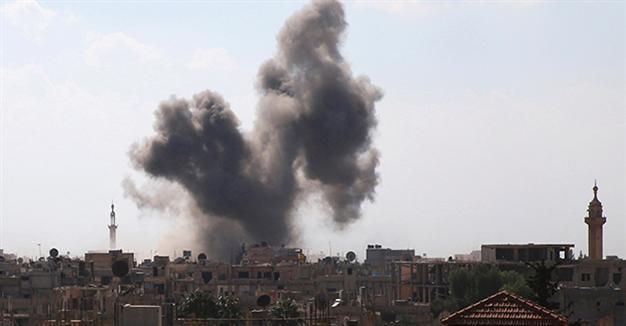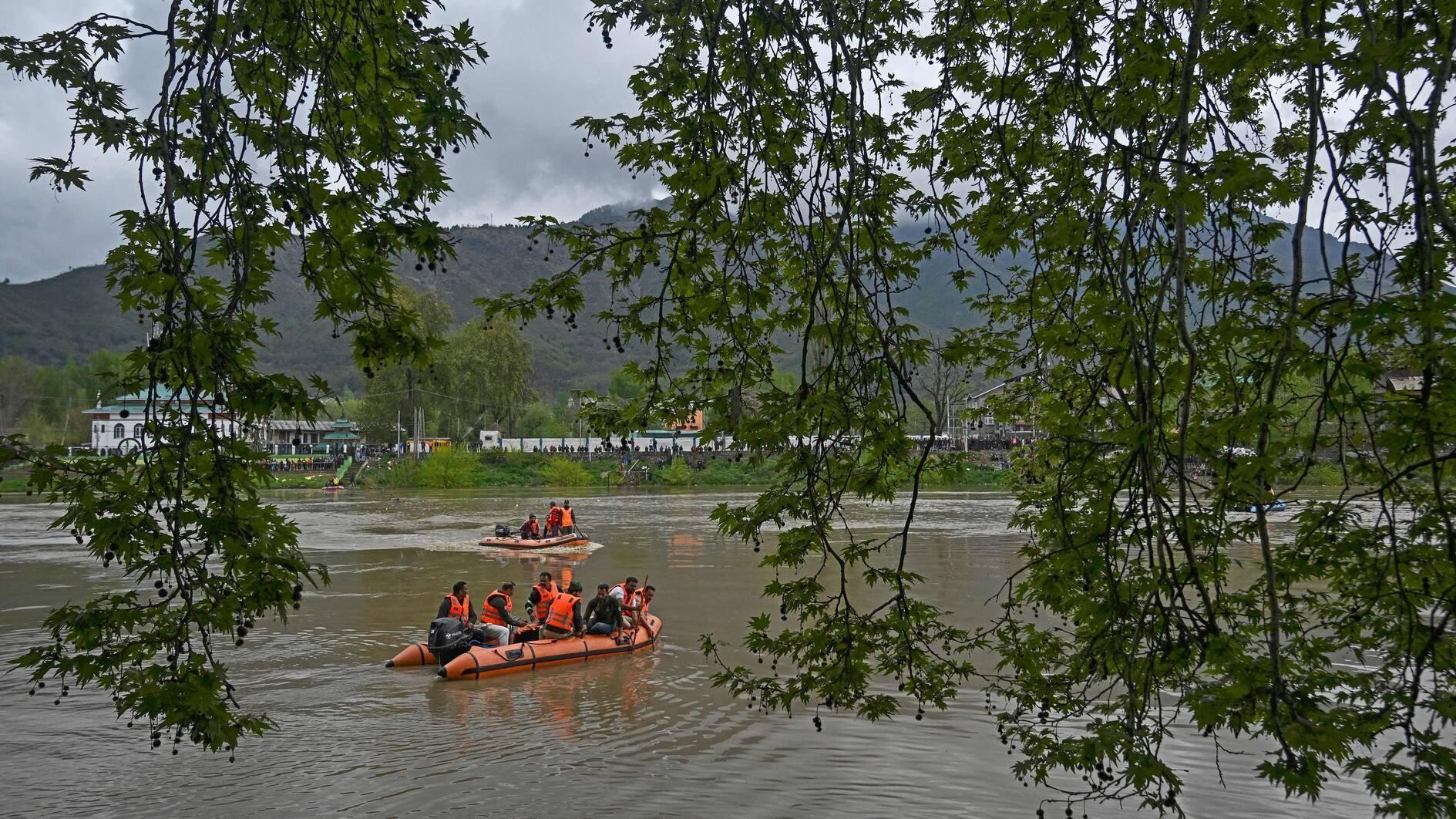The battle for Syria
William Armstrong - william.armstrong@hdn.com.tr

Smoke rises after an airstrike in the rebel-held town of Dael, in the Deraa Governorate, Syria, Sept. 5. REUTERS photo
‘The Battle for Syria: International Rivalry in the New Middle East’ by Christopher Phillips (Yale University Press, $30, 320 pages)Since the Syrian civil war broke out in 2011, up to 500,000 people have been killed and 2 million have been injured. Over 4.8 million have fled the country and 6.6 million more are internally displaced. Large parts of Syria’s cities are in rubble and the economy is in ruins. A U.N. report estimated that by the end of 2013 Syria had already regressed 40 years in its human development. Two years later half of its public hospitals had been closed, barely half of its children were attending school and over 80 percent of Syrians were living in poverty. Average life expectancy in the country dropped from 70 to 55 in four years.
 The situation is only getting grimmer and there is no end in sight. “The Battle for Syria” by Chatham House associate fellow Christopher Phillips gloomily concludes that the conflict is likely to rage for many more years because of the external dynamics now driving it. Phillips describes his book as a corrective to most accounts of the war that focus primarily on internal dynamics. He argues that while internal factors were all-important early on, external actors became increasingly crucial as the conflict dragged on.
The situation is only getting grimmer and there is no end in sight. “The Battle for Syria” by Chatham House associate fellow Christopher Phillips gloomily concludes that the conflict is likely to rage for many more years because of the external dynamics now driving it. Phillips describes his book as a corrective to most accounts of the war that focus primarily on internal dynamics. He argues that while internal factors were all-important early on, external actors became increasingly crucial as the conflict dragged on.Phillips stresses that his book “does not deny agency to either Assad or his opponents, and certainly does not indulge conspiracy theories that either acted as an agent of a foreign power from the beginning.” But it does give international factors a central role in the narrative. “The Syrian civil war cannot be explained without a detailed understanding of the international dimension,” Phillips writes, arguing that from the start external actors pursuing regional or global agendas have been essential in enabling and facilitating both regime and opposition actions.
Indeed, there are few events in world history that have not involved outside meddling in some form. French secret agents were involved with the leaders of the 1776 American rebellion against the British crown; the British government supported Greek nationalists in the 1820s revolt against the Ottoman Empire; Spanish, French and German agents supported Irish leaders in their wars against the British government; German intelligence supported and financed the Russian Bolsheviks in 1917-1918. Noting these factors in isolation from all other events only leads to apologetics or conspiracy theories. In Syria, foreign involvement did not cause the war. But it did exacerbate it, and the international struggle over Syria is today the single biggest obstacle to peace.
Phillips describes today’s Syria as a battleground in the “post-American Middle East” after the failure of the Iraq war, the financial crisis and Barack Obama’s preference for drawdown. “The post-American Middle East was already developing before 2011 but the Syrian civil war, as well as being partly a product of this change, helped catalyze it further.” Syria was both a symptom and a reinforcer of this regional shift.
“The U.S. remains the most powerful actor, but now other powers are independently asserting or reasserting their influence,” Phillips writes. As Washington drew back, Russia, Iran, Saudi Arabia, Qatar and Turkey all saw an opening to extend their influence. Each of them deepened cooperation with proxy forces on the ground and acted as their voice on the international stage. The result is Syria as the bloody crucible of an emergent multipolar Middle East.
Phillips notes that involvement by a foreign state on one side can shorten civil wars by increasing the chances that its ally will win or force its enemy to negotiate. But “balanced interventions,” when multiple actors become involved on both sides, lengthen wars by creating a stalemate. That is what has happened in Syria. Both the regime and its opponents received external support from multiple sources, but it was not sufficient for either to achieve military victory or force the other side to negotiate. The six players in Syria were strong enough to affect the conflict, but not strong enough to sway it decisively in one direction. The result is grim stalemate.
Turkey is a good example of a regional power whose ambitions outstrip its capacity: Rolls Royce dreams but Tofaş reality. “Compared to all other major players, Turkey is in the worst position compared to 2011,” Phillips argues. Back at the start of the Syrian conflict, Ankara had ambitions for regional leadership. These ambitions appear to now be in tatters. The war has contributed to Turkey’s internal challenges: The country now hosts over 3 million refugees, is targeted by ISIS terrorism, and is confronted by the radicalization of many of its own citizens. Turkey’s internal Kurdish situation has considerably worsened as a result of the Syrian war, while Ankara has watched allies of the outlawed Kurdistan Workers’ Party (PKK) carve out a proxy state in Rojava across the border. Former Foreign Minister Ahmet Davutoğlu once talked of Turkey being the “owner, pioneer and servant of the new Middle East,” but the Syrian morass now physically blocks it from the region.
“The Battle for Syria” is a crisply argued book enriched by interviews with top officials and representatives on all sides of the conflict. But Phillips is probably overstating it to suggest that the international dimension is underappreciated. News coverage of Syria today is overwhelmingly focused on the jostling of various international players. The hopeless suffering of ordinary Syrians seems like a secondary consideration.
Phillips argues that “some kind of update to the 1967 Khartoum Agreement, in which regional states agreed to respect each other’s sovereignty, is sorely needed to prevent the post-American Middle East descending into a chaos of local wars and failed states.” But he is not optimistic. There seems little appetite from the main regional players to accept such a balanced system. “Until the various external actors involved either have their goals sufficiently satisfied or cut their losses and leave the stage, the war is likely to continue in some form,” he suggests.
In the wake of the U.S. withdrawal from the Middle East, regional states are scrambling around to maximize their advantages. In Antonio Gramsci’s over-quoted but germane words: “The crisis consists precisely in the fact that the old is dying and the new cannot be born; in this interregnum a great variety of morbid symptoms appear.”
*Follow the Turkey Book Talk podcast via iTunes here, Stitcher here, Podbean here, or Facebook here.










